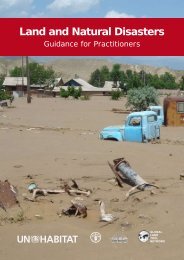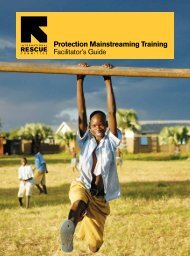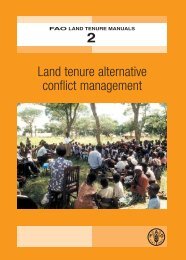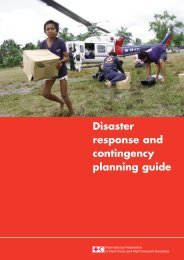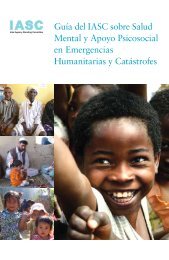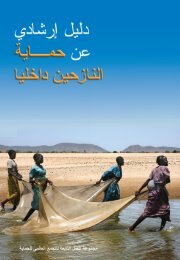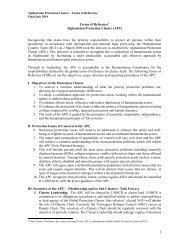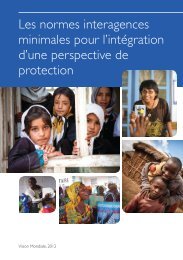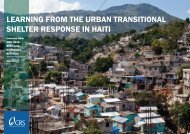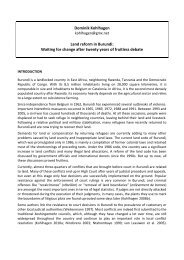Inter-Agency Real Time Evaluation of the Response to Cyclone Nargis
Inter-Agency Real Time Evaluation of the Response to Cyclone Nargis
Inter-Agency Real Time Evaluation of the Response to Cyclone Nargis
Create successful ePaper yourself
Turn your PDF publications into a flip-book with our unique Google optimized e-Paper software.
3.2 AssessmentThe Post-<strong>Nargis</strong> Joint Assessment (PONJA) was a joint undertaking <strong>of</strong> <strong>the</strong> TCG and included some250 staff from <strong>the</strong> Government <strong>of</strong> Myanmar, ASEAN (supported by <strong>the</strong> ADB and WB), UNagencies and NGOs. It consisted <strong>of</strong> two parts, a Village Tract Assessment (VTA) and a Damage andLoss Assessment. It was organized and implemented in a relatively short time for such far-reachingexercise. Agreement <strong>to</strong> conduct <strong>the</strong> exercise was reached at <strong>the</strong> 25 May pledging conference andteams were in <strong>the</strong> field ga<strong>the</strong>ring data by 10 June, with <strong>the</strong> report released on 21 July. The PONJAstands out not only as a good practice example <strong>of</strong> an interagency assessment with extensivecommunity consultations undertaken at a relatively early phase <strong>of</strong> <strong>the</strong> emergency, but also helped <strong>to</strong>build trust between stakeholders (notably western bilateral donors and <strong>the</strong> Myanmar government) bydeveloping <strong>the</strong> basis for a common plan <strong>of</strong> action.O<strong>the</strong>r significant ongoing assessments include <strong>the</strong> WFP/FAO Food and Crop Assessment and alarge-scale nutritional survey which should provide a complete food security picture for <strong>the</strong> affectedareas. The Periodic Review <strong>of</strong> <strong>the</strong> PONJA should similarly provide a useful update on overallactivities.3.3 FundingBased on interviews with key informants from international agencies and communities, sec<strong>to</strong>ralreports, observations and an analysis funding patterns funding for life-saving humanitarian activitiesappeared <strong>to</strong> have been adequate. Never<strong>the</strong>less, well-founded concerns exist amongst manyinternational agencies about <strong>the</strong> availability <strong>of</strong> funds for ongoing humanitarian needs and forrecovery in future. At <strong>the</strong> time <strong>of</strong> <strong>the</strong> IA RTE field visit, <strong>the</strong> bulk <strong>of</strong> <strong>the</strong> humanitarian funding wasscheduled <strong>to</strong> terminate ei<strong>the</strong>r at <strong>the</strong> year or at <strong>the</strong> end <strong>of</strong> <strong>the</strong> Flash Appeal period in April 2009.Some additional humanitarian funding had been made available (e.g. 30m AUD from AusAid) ando<strong>the</strong>r donors were planning <strong>to</strong> make more available (e.g. ECHO, DFID), but key informants fromboth INGOs and donors suggested that recovery funding may be quite limited.One impact <strong>of</strong> this uncertainty has been that agencies are being cautious about <strong>the</strong>ir longer-termplanning, including human resources with most INGOs maintaining a cadre <strong>of</strong> relief workers ra<strong>the</strong>rthan proceeding with recruitment <strong>of</strong> staff with more specialized backgrounds in livelihood recoveryand DRR more relevant <strong>to</strong> <strong>the</strong> current context.17



